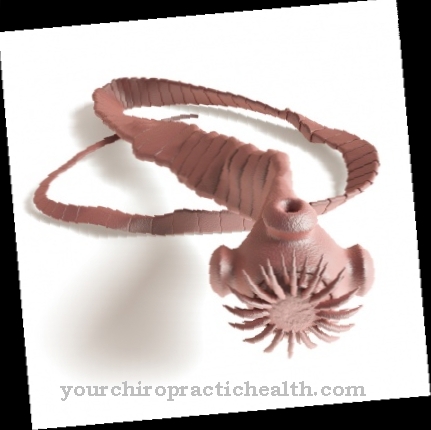The Coronary angiography is an invasive examination of the heart vessels for diagnostic or therapeutic purposes. It is also known as a coronary artery examination. Coronary angiography is of the highest importance and informative value for all arteriosclerotic changes in the coronary arteries.
What is coronary angiography?

Conventional coronary angiography is an imaging method for displaying the coronary arteries, i.e. the so-called coronary vessels. These bloodstreams permanently supply the heart muscle with nutrients and oxygen. The aim of the examination is to make the interior of these finely branched blood vessels, the lumen, visible.
In addition to contrast media, X-rays are also used for this purpose, so that constrictions can be identified and treated in real time. This narrowing of the coronary arteries is the most common cause of what is known as coronary artery disease and a heart attack. The extent of the discomfort and the functional impairment in a heart attack always depends on the degree of narrowing. All intermediate stages are possible, from asymptomatic micro-infarctions to severe transmural infarctions with a fatal outcome.
With conventional coronary angiography, the extent and effects of stenoses in the coronary arteries can be precisely displayed. The examination is carried out with the help of a left heart catheter. The diagnostic significance of a cardiac catheter examination is rated as high to very high. The procedure can be carried out on an outpatient or inpatient basis as a routine intervention or as part of an emergency diagnosis in the event of a suspected heart attack.
Function, effect & goals
Coronary angiography is an examination that is frequently carried out in Germany, so there is sufficient experience for a targeted and safe examination procedure. It has proven itself both in the prevention of severe heart disease and in emergency therapy against coronary heart disease, and can be repeated several times if medically indicated.
Coronary angiography is performed under sedation and pain relief under partial or short general anesthesia. The actual implementation always depends on the patient's condition. The medical guidelines ensure standardized procedures for performing cardiac catheter examinations. Although there can be certain variations depending on the clinical picture, the basic procedure for each selective coronary angiography is initially the same. After palpation of the left inguinal artery, a tiny incision is made with a scalpel, which allows the left heart catheter to be advanced slowly from this point into the descending aorta under X-ray control.
After the catheter has been brought into the correct position, the contrast agent is applied immediately, also via the catheter. The contrast agent is now distributed very quickly with the blood flow in the coronary arteries, and this process is documented in several x-rays. The method used is what is known as X-ray fluoroscopy.
Several X-ray images are made at short intervals, which also allow a representation of the beating heart. The doctor can therefore precisely observe the path of the contrast medium through the coronary arteries in real time and assess any constrictions in terms of shape and size. Documentation on CD, video or DVD has proven its worth since the introduction of the process. Because with this image material a careful analysis can take place even after the actual examination.
In the case of complex findings in particular, careful subsequent evaluation of the image material has proven to be very helpful with regard to therapy. The TIMI classification is used to accurately assess the coronary blood flow with the aid of coronary angiography. This system divides the blood flow in the coronary arteries into 4 degrees. Grade 3 means unrestricted, complete perfusion. In grade 2, the blood circulation is already partially restricted, in grade 1, some contrast medium already accumulates in front of a constriction and in the worst grade 0 no more perfusion takes place, in this case the contrast medium does not penetrate beyond the occlusion.
Therapeutically, an inflatable balloon or a fine wire mesh, the so-called stent, can be pushed forward through the catheter in order to restore blood flow to the constriction. With balloon dilatation, the balloon is removed again after the constriction has burst open, a stent remains at the constriction and supports the usually brittle vessel wall from the inside.
Risks, side effects & dangers
Despite the routine of coronary angiography, the risks and dangers should never be underestimated. The most common side effects include intolerance reactions to contrast media, vascular injuries during the procedure or cardiac complications such as ventricular fibrillation or asystole, both of which are medical emergencies that are life-threatening and require intensive care.
Central embolisms can lead to strokes when thrombi are introduced into the bloodstream. Secondary bleeding, hematomas or infections are other non-specific dangers of coronary angiography. If nerves are injured during the procedure, permanent sensitivity disorders can be the result. The relatively high level of exposure to ionizing radiation, which poses a danger to both the patient and the medical and non-medical staff, should also not be underestimated.
A lead apron and lead gloves protect the doctor from a large part of this radiation during the procedure, but a certain amount of scattered radiation cannot be avoided. The medical benefits far outweigh the dangers posed by possible risks. There are now good alternatives to conventional coronary angiography for high-risk patients. Coronary magnetic resonance angiography works entirely without harmful X-rays through nuclear spin, the results are almost equivalent to those of conventional coronary angiography. Another alternative is non-invasive coronary angiography using computed tomography.





.jpg)






.jpg)



.jpg)










.jpg)
